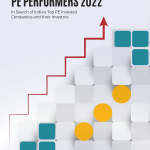
Operating in a volatile economy with mounting pressures from rising costs, businesses need to constantly seek new ways to secure their operations in both the short and the long term. And they know that agility is critical to survive and thrive in competitive markets. As more and more enterprises seek to digitally transform themselves, they seek this agility as an in-built option, which ties in with their strategy to improve the finance & accounting services (F&A) units.
By automating and digitizing paper-based financial processes that take a toll on data integrity and accuracy due to manual errors, finance leaders not only make the F&A team more efficient but can future-proof the entire organization.
In the past, businesses had a siloed approach for F&A transformation programs wherein they used point solutions for specific problems, instead of delving into and addressing data quality issues. This stance impaired finance related processes from blooming to their full potential as the organizations were not agile enough to respond to sudden changes in business demands and market parameters.
To make F&A more responsive and future-ready, it is important to resolve the data quality issues around trust and governance. Finance executives must also be leveraging more from the advanced analytics to generate a stream of value-adding insights that assists better- informed decision making.
Exploring new technologies for finance functions
According to Gartner’s report published in February 2023, over 40% of all finance roles will be significantly reshaped by technology through 2025. And 85% of the F&A teams are already undergoing some form of transformation exercise. Amidst these developments, autonomous finance is the key operating model that CFOs could use to deliver finance capabilities through processes partly administered and chiefly operated by machine learning software tools. Such a framework will help meet the rising demand for multi-dimensional business insights.
As F&A teams prepare for autonomous finance and navigate their changing industrial environment, they must adopt certain disruptive technologies and tools that help understand business risks and enable their organization to respond proactively. These technologies include:
- Data analytics – Combining heterogeneous data sets from internal and external sources for deep insights.
- Visually rich dashboards – Presenting insights in intuitive formats to share consistent reports on business performance with decision makers.
- Cloud – Enabling faster and more agile implementation of automated processes while giving flexibility to add new details at any time from anywhere.
- Automation – Applying tech to record data, categorizing transactions, reconciling accounts with bank statements, and streamlining audit processes with minimal manual intervention.
- AI – Leveraging predictive models to foresee possible future scenarios and assessing their sensitivity for business revenue generation and profitability.
CFOs must also remember that while innovating F&A functions, their teams may still be adopting traditional methods that stifle experimentation and bring a risk of losing the competitive edge. To avoid this challenge, it is advisable to apply composable thinking to financial tech strategy – the approach allows finance teams to create a balance between stable applications for usual capabilities, and innovative applications for areas where the organization needs to differentiate itself.
As an emerging technology, composability is gaining traction across verticals. It sorts out finance tech architecture into modular application building blocks to deliver well-defined finance proficiencies supporting specific business outcomes.
Redefining the finance team’s role
The major benefit of transforming finance functions with automation and other digital technologies is that it reduces mundane and error-prone manual work. However, platforms and algorithms do not run on their own. Organizations driving digitization across their F&A processes cannot meet the goals of autonomous finance models without the best of domain and industry expertise.
What’s more, , adoption of such disruptive tech also helps the department’s human talent up a few notches bringing additional value for companies that are looking at new ways to manage cash flows and eliminate risks.
Finance professionals can also leverage advanced AI-ML technologies for deep analysis of the data stored by their department and draw insights from it to personalize the decisions that need a human touch. They can use their knowledge and experience to help the business grow with unbiased market predictions, forecasts for increase or decrease in future expenses, and detecting statistical probability of billing anomalies. These efforts made by the F&A personnel can also help the organization in more effective risk control and better budgeting.
The way forward
As CFOs future-proof F&A processes for 2023 and beyond, they must have a flexible finance transformation roadmap that can respond swiftly to market shifts by assembling and disassembling different tech components. Summarily, the focus should be on creating a technology landscape with composable application building blocks that support a more agile, sustainable and business-centric finance function.


